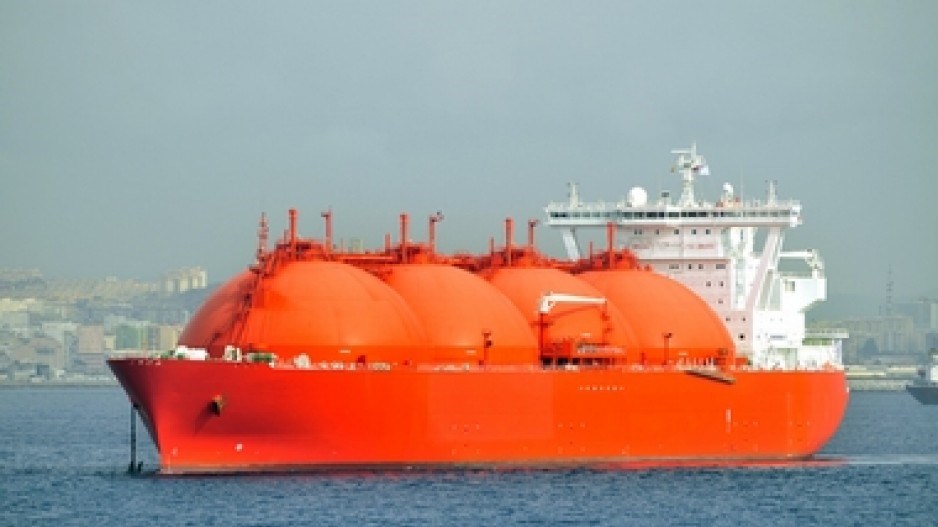It is inevitable that significant LNG exports will lift natural gas prices, says an official from an industry whose feedstock price is determined by gas prices.
The National Energy Board has issued licences allowing up to 18 billion cubic feet (bcf) per day of natural gas to be liquefied for export, even though production is only 13-14 bcf a day, said Tyler Edgington, director of feedstocks at Dow Chemical Canada ULC.
"How do you say that's not going to have an impact on gas prices?" Edgington told the Canadian Energy Research Institute's 2014 gas conference on Tuesday.
He readily acknowledged that not all of the 13 LNG export projects proposed for Western Canada will proceed.
"I don't think that anybody thinks that 18 bcf will go up," Edgington said.
"If gas prices do go up, there will be some demand destruction and there will be an impact on the market."
While recognizing that Canadian producers need new markets, he argued that "over-exporting natural gas is going to benefit a few companies. Producers will be happy – there's going to be some liquefaction facilities and there's going to be some Asian buyers. But every one of us as a gas consumer is going to feel the impact. And there's going to be some industrials that don't expand or potentially are going to relocate."
The Dow official said it's clear the United States is in the midst of a manufacturing renaissance, much of it "predicated on affordable, abundant natural gas." He said the thinking at Dow in 2005 when gas prices were spiking was that the company would never build another petrochemical complex in the United States.
"And now if you look, there's at least six or seven projects – new ethane projects – that are being targeted in the Gulf Coast and in Pennsylvania and other places," he said.
Looking at all new projects across industries that are major gas consumers, he said there are about 120 new projects that are predicated on "affordable" gas in the U.S., representing about $100 billion in capital spending.
"I'd say that Canada is maybe a little bit earlier in the cycle, but it's certainly starting to see the benefit of that as well," he said, citing examples. About a year ago Williams Companies said it would build a $900 million propane dehydrogenation (PDH) plant near its existing Redwater, Alberta fractionation plant. And later last year, South Africa's Sasol bought a 526-hectare site in the Industrial Heartland area near Edmonton for a possible gas-to-liquids plant.
"And then many of us have probably heard there's a lot of people kicking tires in town, a lot of Asian buyers are looking at, how do we take advantage of [Western Canada's low gas prices]. So I think Canada is poised for a similar resurgence in manufacturing," Edgington said.
Citing one forecast that the NYMEX Henry Hub gas price could rise to US$8 per mmBtu by 2016, he said an Alberta plant to convert gas to liquid fuels wouldn't be economic at that gas price even with oil prices in the US$105-$110-a-barrel range. (A gas-to-liquids operation requires a large spread between the price of its gas feedstock and the price of crude oil which determines the price of liquid fuels.)
Edgington said Dow Chemical isn't looking for a ban on Canadian LNG exports. He accepts that Canada and the U.S. have a vast resource of gas in formations such as the Montney and the Marcellus.
"The U.S. market is going away because the U.S. is [becoming] self-sufficient in gas. Canada must look to new markets," he said.
"I think Dow's concern is, though, in the rush to find new markets, that there may be a new cost in volatility that's put on the market. And it may be a barrier to either new entrants or change the competitive position of industries that are benefiting here, such as Dow."
Edgington said he would like to hear what the NEB believes would be the macroeconomic impact of proposed LNG exports. So far, the board hasn't rejected any applications for LNG export licences.
"To me it shows maybe a lack of coherent strategy on what is the proper amount of exports," he said. "I think there's probably a proper amount … a sweet spot where producers will have the economics to produce, consumers won't be too burdened."
However, the petrochemical executive didn't say what that export number should be. Dow is advocating "a slow and measured approach" that would look at the cumulative impact of exports, he said, "rather than just throw a junk ball in and see what happens."
He said Canada shouldn't have to choose between exporting and manufacturing.
"It's not an 'either/or' scenario, it's an 'and' scenario. What Dow is advocating is more for, 'Let's look at this on a macroeconomic basis that benefits all the stakeholders.'"
Edgington recalled Alberta's value-added strategy of the 1970s which required ethane to be stripped out of exported gas at the border, thereby establishing the province's petrochemical industry.
"Today the petrochemical business employs 85,000 people and produces $47 billion in GDP," he said, adding that Alberta's total gross domestic product is only $312 billion.
"So it's a significant amount. So what we'd like to see is a continuation of that policy, or some [form] of that policy, where a portion of the liquids that are destined for LNG are kept in house."




